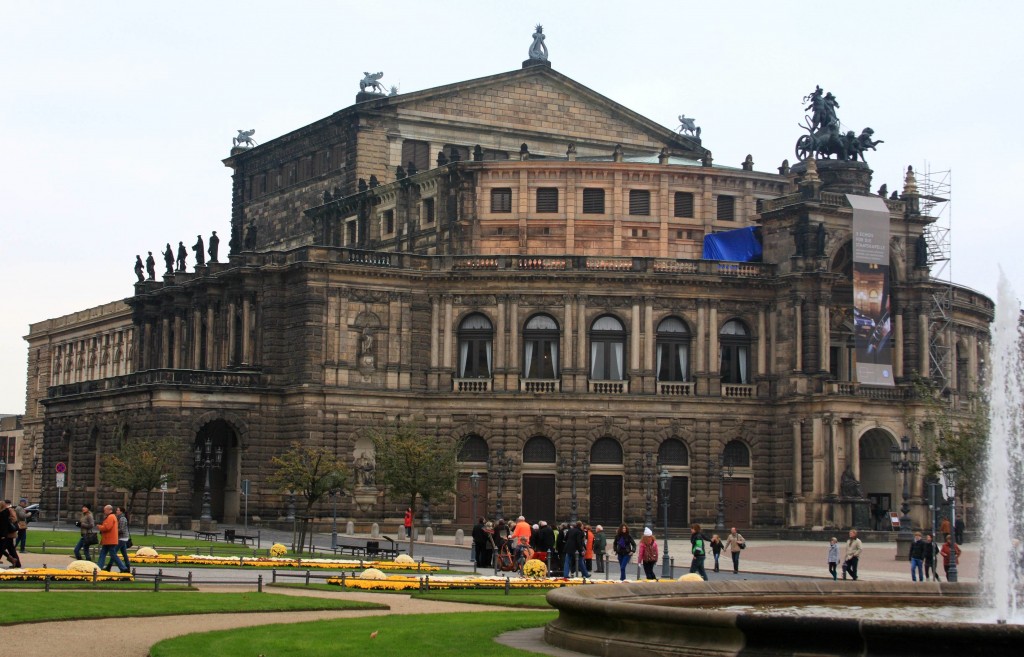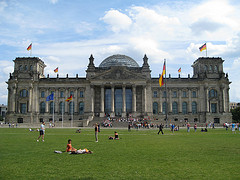By: Jesi Tassava
The architectural period known as Historicism began in the early 19th century. It is also known as the Century of Historicism. Architects revisited the major architectural time periods in the past and brought them back to life. They studied historical forms of architecture and it was this research that defined the architecture of the century. Several of these periods were known as Neo-Baroque, Neo-Renaissance, Neo-Gothic, and many more. Several famous buildings were created during this time, such as Sir Charles Barry’s Travellers’ and Reform Clubs, the first Opera House in Dresden, and St. Stephens Parish Church. (Gyetvai-Balogh, 2007) There is no one way to describe the style of Historicism because it is a mixture of previous styles brought back to the architectural world.

Semper Oper,the Dresden Opera House
by Frank Kovalchek, used under 
The Dresden Opera House was originally designed by Gottfried Semper and built in Germany between the years 1837-41 but was burnt down in 1869. The original structure was built in the Neo-Renaissance style with huge vaulted ceilings and “repeating externally the structure of the auditorium inside.” (Gyetvai-Balogh, 2007) Semper’s son, Manfred Semper redesigned the opera house between 1871-78 with the approach of Neo-Baroque style. With paired columns and the crowning features of statues in the later style, the two opera houses are very different from each other.

Reichstag
by Ross Huggot, used under 
The Reichstag Building in Germany was designed by Paul Wallot in 1894. It was built in the styles of Neo-Renaissance and Neo-Classical with defining features such as the “facade of columned porticos” and “a wide flight of steps that must be climbed to reach the main entrance portal” (“Reichstag” n.d.). It also has a glass and steel dome in the center of the building. Reichstag is now used for parliamentary meetings and exhibitions (“Reichstag” n.d.).
Sources:
Gyetvai-Balogh, A. (2007). Architecture of the 19th Century and the Turn of the Century. Budapest University of Technology and Economics .
Reichstag. (n.d.). Retrieved 4 10, 2014, from Berlin.de: https://www.berlin.de/orte/sehenswuerdigkeiten/reichstag/index.en.php